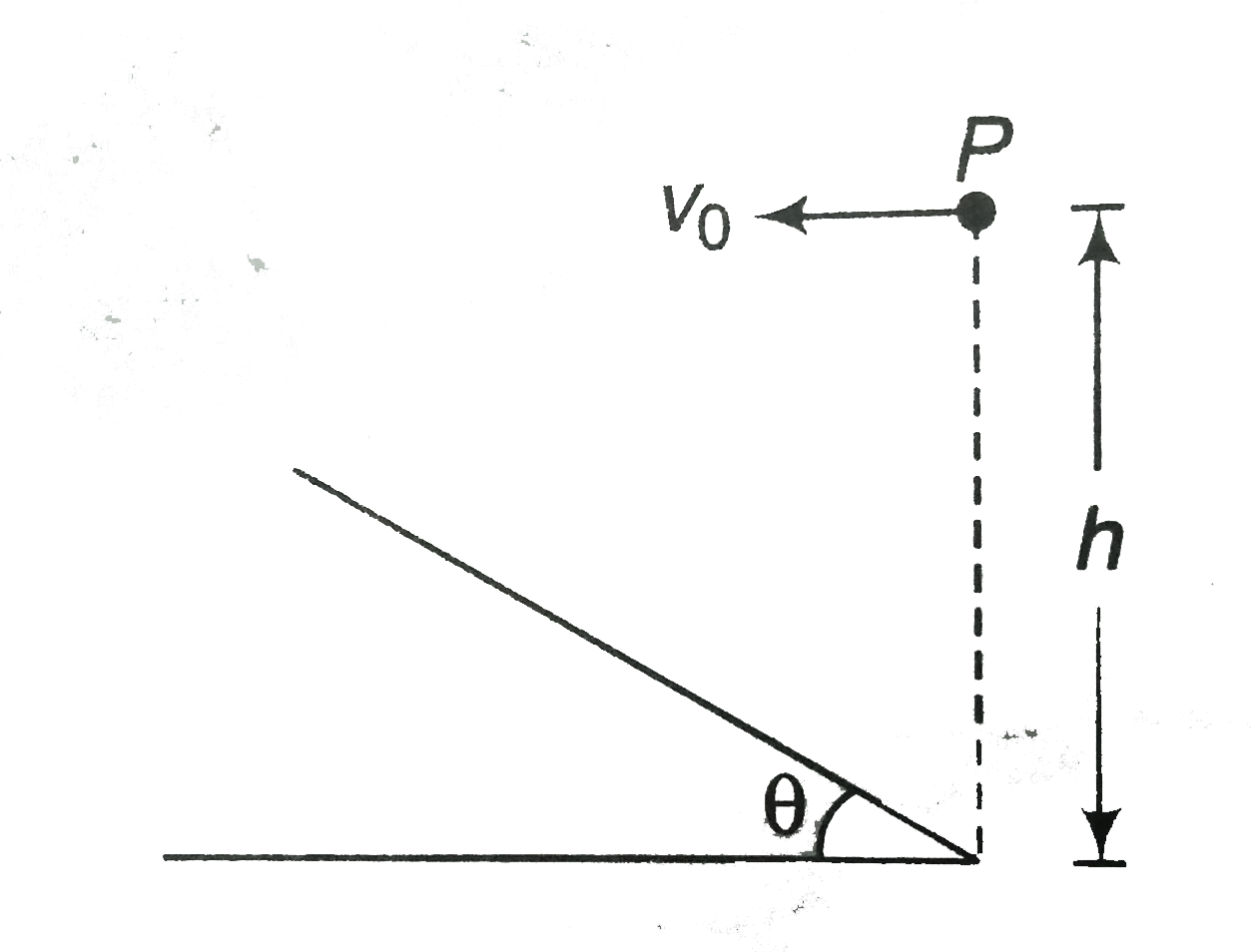A particle starts with an initial velocity and passes successively over the two halves of a given distance with constant accelerations a1anda2 respectively. Show that the final velocity is the same as if the whole distance is covered with a uniform acceleration a1+a22.
In the first case,

v21=u2+2a1s …..(i)
v22=v21+2a2s ….(ii)
Adding Eqs. (i) and (ii), we have
v22=u2+2(a1+a22)(2s) ….(iii)
In the second case
v2=u2+2(a1+a22)(2s) ...(iv)
From Eqs. (iii) and (iv) we can see that
v2=v
Topper's Solved these Questions
- MOTION IN A PLANEBOOK - DC PANDEYCHAPTER - MOTION IN A PLANEEXERCISE - Check point 3.1
10 Videos
- MOTION IN A PLANEBOOK - DC PANDEYCHAPTER - MOTION IN A PLANEEXERCISE - Check point 3.2
10 Videos
- MOTIONBOOK - DC PANDEYCHAPTER - MOTIONEXERCISE - Medical entrances gallery
19 Videos
- PROJECTILE MOTIONBOOK - DC PANDEYCHAPTER - PROJECTILE MOTIONEXERCISE - Level - 2 Subjective
10 Videos
Similar Questions
Which of the following is a one-dimensional motion ?
View SolutionA car moves for half of its time at 80km/h and for rest of time at 40km/h. Total distance covered is 60km. What is the average speed of the car
View SolutionA particle is projected with an angle of projection θ to the horizontal line passing through the points (P,Q) and (Q,P) referred to horizontal and vertical axes (can be treated as X-axis and Y-axis respectively). The angle of projection can be given by
View SolutionDetermine the horizontal velocity v0 with which a stone must be projected horizontally from a point P, so that it may hit the inclined plane perpendicularly. The inclination of the plane with the horizontal is θ and point P is at a height h above the foot of the incline, as shown in the figure.

View SolutionIf a0,a1,a2,……an be the successive coefficients in the expnsion of (1+x)n show that (a0−a2+a4……..)2+(a1−a3+a5………)2=a0+a1+a2+………..+an=2n
View SolutionA particle starts with an initial velocity and passes successively over the two halves of a given distance with constant accelerations a_1 and a_2 respectively. Show that the final velocity is the same as if the whole distance is covered with a uniform acceleration (a_1 + a_2)/2 .
View SolutionA body A starts from rest with an acceleration a_1 . After 2 seconds, another body B starts from rest with an acceleration a_2 . If they travel equal distances in the 5th second, after the start of A , then the ratio a_1 : a_2 is equal to :
View SolutionIf b,c B are given, and if b<c, show that (a1−a2)2+(a1+a2)2tan2B=4b2, where a1,a2 are the two values of the third side.
View SolutionA body A starts from rest with an acceleration a1. After 2 s another body B starts from rest with an acceleration ar If they travel equal distance in the 5th second after the start of A. a1:a2 is equal to
View Solutiona_1 And a_2 And if two nonlinear single vectors abs(a_1+a_2)=sqrt3 Yes, then (a_1-a_2)*(2a_1+a_2) Will
View SolutionThe initial velocity is u and acceleration (f) is uniform. Final velocity and distance covered in the interval t are v and s respectively. Show that the velocity of the particle at half-distance is more than the velocity for half -time.
View SolutionIf a1anda2 are two non-collinear unit vectors and if |a1+a2|=√3, then the value of (a1−a2)⋅(2a1+a2) is
View SolutionThe velocity of a particle is given by v=3+6(a1+a2t) where a, and an are constants and t is time. The acc. of particle is:
View SolutionIf same force is acting on two masses m1 and m2 and the accelerations of two bodies are a1 and a2 respectively, then
View Solutionएक कण A विरामावस्था से a1 त्वरण से गति प्रारंभ करता है, इसके 2 सैकण्ड पश्चात् एक अन्य कण B विरामावस्था से a2 त्वरण से गति प्रारंभ करता है। यदि A के गति आरंभ से 5 वें सैकण्ड में दोनों समान दूरी तय करते हों, तो a1:a2 का मान होगा
View Solutionयदि A1 तथा A2 दो अरेखीय एकांक सदिश हैं तथा यदि |A1+A2|=√3, तब (A1−A2).(2A1+A2) का मान है
View Solution

